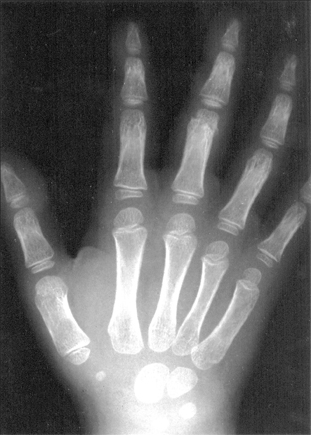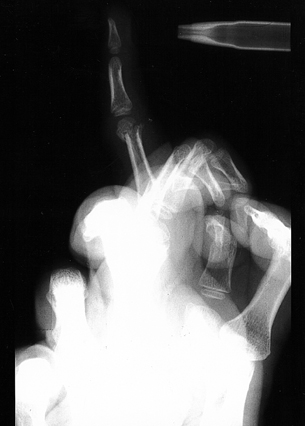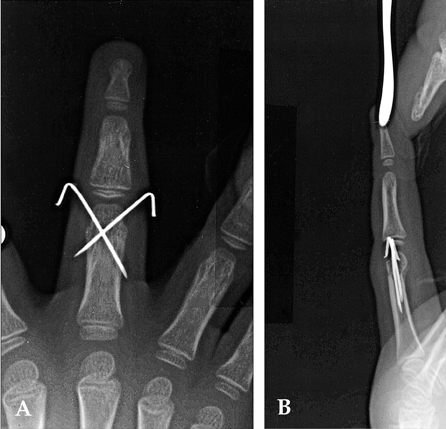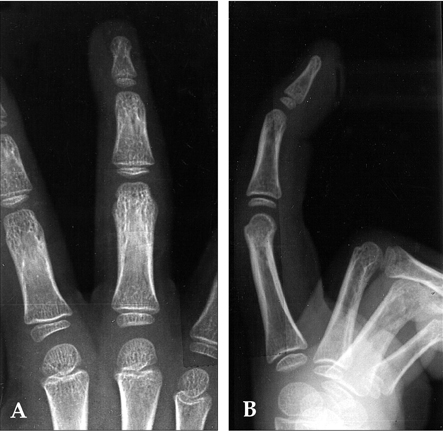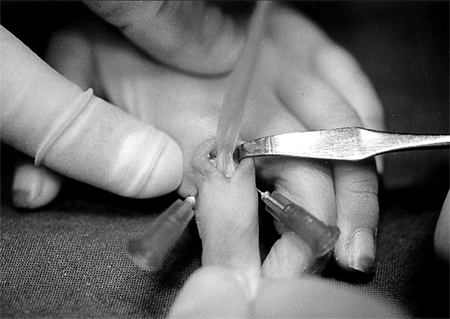Yonsei Med J.
2005 Aug;46(4):491-495. 10.3349/ymj.2005.46.4.491.
Operative Treatment for Proximal Phalangeal Neck Fractures of the Finger in Children
- Affiliations
-
- 1Department of Orthopaedic Surgery, Yonsei University College of Medicine, Seoul, Korea.
- 2Department of Orthopedic Surgery, National Health Insurance Corporation, Ilsan Hospital, Kyonggi-do, Korea. Sysung@nhimc.or.kr
- KMID: 1716518
- DOI: http://doi.org/10.3349/ymj.2005.46.4.491
Abstract
- Displacement and inappropriate treatment of a proximal phalangeal neck fracture may result in malunion of the fracture with consequent loss of motion and gross deformity, especially in children. We performed a retrospective study of twenty-four patients who had undergone operative treatment for a proximal phalangeal neck fracture, with a mean follow-up evaluation of 14 months (range: 12-30 months). We analyzed the types of fractures, their causes, operative treatments, complications, and functional outcomes. The age of the patients ranged from 2 to 14 years (average: 4.8 years). Twenty of the 24 patients had open reduction and internal fixation, and fourteen of these 20 patients had criss-cross pin fixation. Four of the 24 patients had closed reduction and percutaneous pinning. The average length of immobilization was 3.5 weeks. Excellent or good results were seen in 18 patients (75%). Two patients had complications, which included volar angular deformity and mild button-hole deformity. We recommend that careful initial radiography, particularly, true lateral view radiographs, be required for proper diagnosis. The best results can only be obtained with accurate anatomical reduction of the fracture and early active motion exercise.
Keyword
MeSH Terms
Figure
Reference
-
1. De Jonge JJ, Kingma J, Van Der Lei B, Klasen HJ. Phalangeal fractures of the hand. An analysis of gender and age-related incidence and etiology. J Hand Surg. 1994. 19B:168–170.2. Schenck RR. Classification of fractures and dislocations of the proximal interphalangeal joint. Hand Clin. 1994. 10:179–185.3. Worlock PH, Stower MJ. The incidence and pattern of hand fractures in children. J Hand Surg. 1986. 11B:198–200.4. Campbell RM Jr. Operative treatment of fractures and dislocations of the hand and wrist region in children. Orthop Clin North Am. 1990. 21:217–243.5. Barton NJ. Fractures of the phalanges of the hand in children. Hand. 1979. 2:134–143.6. Hastings H 2nd, Simmons BP. Hand fractures in children. A statistical analysis. Clin Orthop. 1984. 188:120–130.7. Mintzer CM, Waters PM, Brown DJ. Remodelling of a displaced phalangeal neck fracture. J Hand Surg. 1994. 19:594–596.8. Wood VE. Fractures of the hand in children. Orthop Clin North Am. 1976. 7:527–542.9. Al-Qattan MM. Phalangeal neck fractures in children: classification and outcome in 66 cases. J Hand Surg. 2001. 26:112–121.10. Leonard MH, Dubravcik P. Management of fractured fingers in child. Clin Orthop. 1970. 73:160–168.11. Dixon GL, Moon NF. Rotational supracondylar fractures of the proximal phalanx in children. Clin Orthop. 1972. 83:151–156.12. Simmons BP, Peters TT. Subcondylar fossa reconstruction for malunion of fractures of the proximal phalanx in children. J Hand Surg. 1987. 12:1079–1082.13. Newington DP, Craigen MA, Bennet GC. Children's proximal phalangeal neck fractures with 180 degrees rotational deformity. J Hand Surg. 1995. 20:353–356.14. Vandenberk P, De Smet L, Farby G. Finger fractures in children treated with absorbable pins. J Pediatr Orthop B. 1996. 5:27–30.
- Full Text Links
- Actions
-
Cited
- CITED
-
- Close
- Share
- Similar articles
-
- Treatment of Phalangeal Joint Stiffness Related to Proximal Phalangeal Bone Fractures: Therapeutic Effects on the Range of Motion and Finger Pain
- Operative treatment of the phalangeal neck fracture in hand
- Management of Proximal Phalangeal Fractures of the Hand Using Finger Nail Traction and a Digital Splint: A Prospective Study of 43 Cases
- Operative Treatment of the Malunited Phalangeal Neck Fractures
- Distribution of Hair on the Phalanges of the Hand in Koreans

